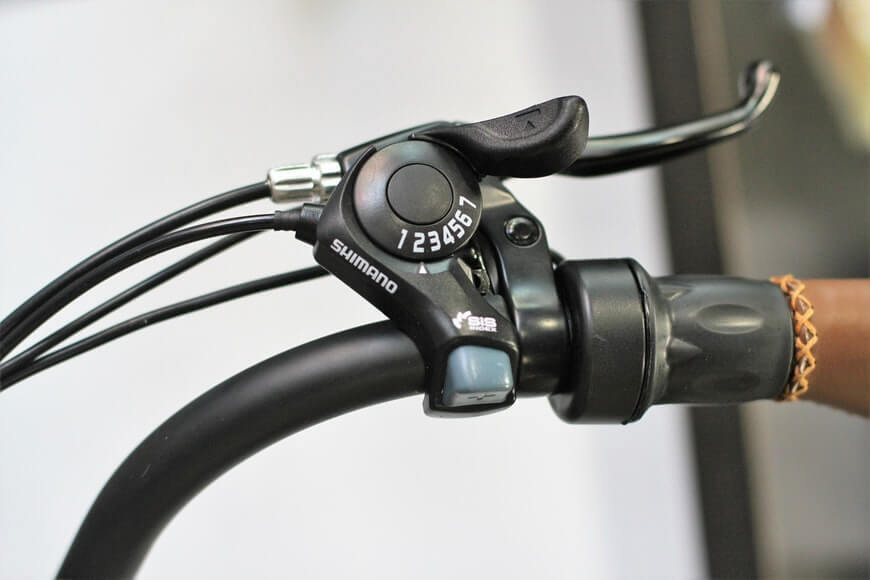When people shop for a new bike, a question that often pops up is, “What is the difference between SRAM and Shimano?” Well, they both are the two dominant component manufacturers in the cycling industry; they offer a range of products that work and perform comparably. But, until now, Shimano has had a stronger hold on the bicycling market; it is the largest and best-known bike component manufacturer. Read further down the page for more information about these two popular bike brands’ history, differences, and functionality.
The History of Shimano
The story of Shimano begins in the 1920s, almost a decade ago, in Sakai city, Osaka, Japan. The 26-year-old Shozaburo Shimano (the founder of Shimano) moved into a small rented place in a demolished celluloid facility, where he opened Shimano Iron Works. He borrowed a single lathe measuring about 1.8 meters long and began producing his first bicycle component: freewheels. Back then, freewheels required the most technology to produce. Still, Shimano was that confident in the reliability of his production that he guaranteed that any defective freewheel would be replaced by two.
Over the years, the company grows, and the range of products also extends.
Shozaburo Shimano was the leader of his company and developed bike components until he passed away in September 1958. That is when his son Shozo Shimano took over and became the second president. Over the following years, the brand became the world’s most dominant manufacturer in the market.
Even today, Shimano is the biggest cycling component manufacturer in the world, and it is currently led by Shozaburo’s grandson Yozo Shimano. The brand’s aim is to promote a happy and healthy lifestyle with its high-quality outdoor products.
The History of SRAM
SRAM Corporation was founded in Chigaco, Illinois, n 1987 by Stanley R. Day. It started with a single product—the grip shift (or twist shift). The grip shift allowed riders to change gears without taking their hands off the handlebars. After a few years, that technology was applied not only to road bikes but mountain bikes too, and thus SRAM assembled more investors, set up offices, and quickly grew. Through acquisitions and research developments, the brand extended its product line to more than one hundred various components. Some of the most notable component companies acquisitions include RockShox, Zipp, Truvativ, and Quarq.
Over the years, SRAM grew to become the second-largest component manufacturer in the market. And it still continues to make innovative products that reshaped the biking industry.
SRAM vs. Shimano: Differences

Now that we’ve talked about the history of the two most popular bike component manufacturers, let’s get to how are their components different from each other? These brands mostly differ in their shifters, cranksets, drivetrains, and a little bit in their warranty and customer service. Please keep reading to find out more about these differences.
Shifters
One of the most important differences between the two brands is their bike shifter design. Shimano uses STI shifters that separate the control of up and downshifts into two different shift levers, and the brake lever pivots inwards and acts as an up and downshift lever.
On the other hand, SRAM DoubleTap does not have two separate levers, but it uses only one paddle-shaped lever behind the brake lever to handle up/downshifts. Pushing this lever one click inward shifts the drivetrain in one direction, and going further in, the drivetrain shifts in the other direction.
So, which one should you choose? It all depends on your preferences and ergonomics. Both of them are pretty simple to use, and they both can downshift multiple gears in a single lever stroke.
When it comes to mountain bikes, the two manufacturers offer trigger-style shifters, and they both can downshift multiple gears with only one lever stroke. But what is the difference then? The main difference is in functionality; Shimano’s trigger-style shifter has a “2-way-release”, which means that the upshift can move in both directions by pushing or pulling the lever. And again, it all comes down to your preferences.
Cranksets
Shimano is known for its Hollowtech crankset standard. It refers to a hollow, aluminum crank arm that is made from two parts joined together. It has the stiffness of a solid crank arm, but it is less heavy.
On the other hand, SRAM uses carbon fiber cranks for its higher-end offerings; they are stronger and lighter than steel cranks. However, Shimano sticks to aluminum and claims that the HollowTech performs as well as carbon fiber cranks with even more durability.
Drivetrains
SRAM introduced 1x drivetrains into the market, while Shimano initially resisted them. Thanks to their reliability and efficiency, single-chainring drivetrains are now one of the most common options for bikes (especially mountain, cyclocross, and gravel bikes).
Shimano still produces 2x mountain bike drivetrains, but it also has increased tier production of 1x drivetrains.
Warranty and Customer Service
Shimano offers a two-year warranty for the quality of the materials and workmanship on most of their products and a three-year warranty on the Dura-Ace and XTR component lines. You can make warranty claims directly to Shimano or through a dealer. However, you can’t reach them through emails, only directly via the telephone.
On the other hand, SRAM offers a two-year warranty for the quality of its materials and workmanship on all of its products. However, they do not deal directly with customers, so your issues have to be handled through a bike shop.
SRAM vs. Shimano: Popularity

Data collected by The Pro’s Closet show that Shimano and SRAM make up more than 90% of all bike groupsets sold. Additionally, the data showed that SRAM had become the most popular choice for mountain bikes, which is probably because of the increased popularity of their single-chainring drivetrains. Meanwhile, Shimano still holds its dominance in the category of road bikes. Other types of bikes, such as gravel and cyclocross, are split almost evenly between Shimano and SRAM.
SRAM vs. Shimano: Final Thoughts
Although there are some differences between them, both brands make high-quality bike components, and they both have established themselves really well amongst cycling enthusiasts globally. Sram and Shimano both bring incredible technology to the table, so there is really no way to choose which brand is better. But, we can say that Shimano is a more popular choice for road bikes, while SRAM has managed to gain a stronger foothold with mountain bikes.
If you are on the fence, go ride both and see which one feels better for you.
Until next time, be safe while cycling!




